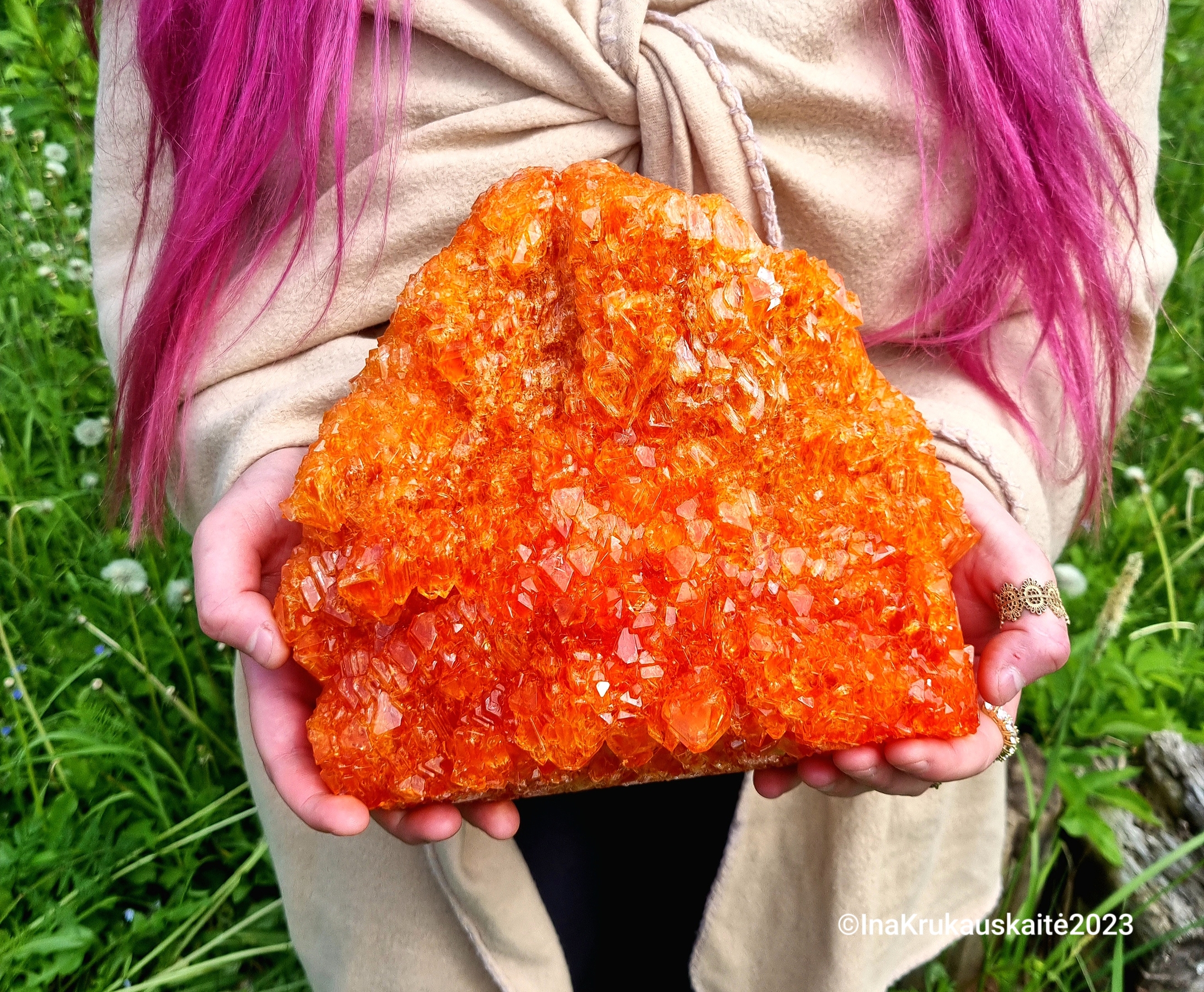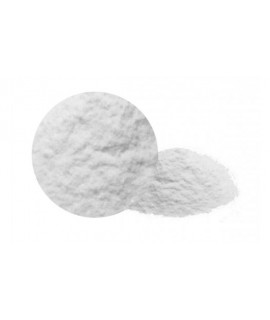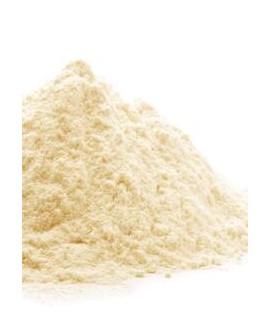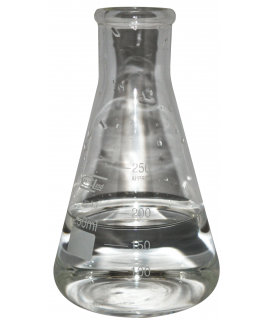POTASSIUM ALUMINIUM SULFATE (POTASSIUM ALUM), kg
6.99 €
00091404
Potassium alum, CAS 7784-24-9, alum, INCI POTASSIUM ALUM, potash alum, alum stone, potassium aluminate.
Parameter | Attribute |
Potassium aluminium sulfate | Potassium alum, alum, potash alum, alum pebble, potash alum |
Formula | KAl(SO4)2 |
Structure |   |
IUPAC | Aluminium potassium sulfate dodecahydrate |
INCI | POTASSIUM ALUM |
CAS | 7784-24-9 |
Molar mass | 474.37g/mol |
Density | 1.725 g/cm3 |
Solubility | 14.00 g/100 mL (20 °C) |
Potassium aluminium sulphate is also known as potassium alum or potash alum with the formula KAl(SO4)2. It is most commonly found in the hydrated form as the dodecahydrate KAl(SO4)2-12H2O. This compound has a very wide range of uses and has been known since ancient times.
In cosmetics, potassium alum is used as one of the active ingredients in antiperspirants and deodorants because it inhibits the growth of odor-causing bacteria. These properties have been known worldwide since ancient times. Today, potassium alum can be found on the market as 'alum crystal', 'alum pebble', 'deodorizing crystal', sold as a natural deodorant. Potassium alum can also be used in depilatory waxes for hair removal or in post-depilatory products as a softening agent. It can also be used in hair styling products as an alternative to cosmetic ointment to keep the hair straight. INCI Function Astringent: helps to tighten the pores of the skin.
In water treatment potassium alum has been used since antiquity. Even today, alum is used as a flocculant (clarifier of turbid liquids) in both drinking water and industrial water treatment, sewage treatment, lake treatment to settle pollutants. The most common use of alum is around 30 to 40 ppm for domestic wastewater treatment, with higher concentrations used for industrial wastewater treatment. Potassium alum alters the surface charge of the solids, allowing them to aggregate into larger aggregates, forming sediments that can be filtered.
In dyeing, aluminium potassium sulfate is used for dyeing/darkening leather. It removes moisture from the skin and prevents it from drying/rotting. Unlike tannic acid, potassium alum does not fix in the skin and can therefore be washed out of the skin. Since antiquity, alum has been used as a dye fixative, forming strong bonds between pigments and tissues. It is also used in the manufacture of marble paper. Potassium aluminium sulfate is used as a base to produce lightning pigments.
In metalworking, alum is used to melt/anneal steels, but at the same time it does not damage either aluminium parts or alkali metals. The alum solution is used to melt steel tool tips that are stuck in moulds.
In fire-fighting applications, potassium alum is used as a flame retardant to impregnate clothing, wood, paper products, etc. to make them less flammable.
In the food industry, potassium alum can be used as an acidifying additive in baking powders for the second phase of dough rising at high temperatures. It also lightens bread, but its use for this purpose is restricted. Potassium aluminium sulfate is also known as 'alum powder' in the culinary arts and is commonly used in preserving recipes to preserve and make fruits and vegetables crispier.
In ceramics, potash alum is used to increase the viscosity of ceramic glaze slurries. It makes the glaze more adhesive to the ceramic and slows down the slurry transfer.
In medicine, potash alum is used as a wound closure and antiseptic. Wound pencils or sticks are composed of potassium alum and aluminium sulfate and are used to reduce the bleeding of small wounds (usually after shaving or scratching). They are also used to stop bleeding from the nose and reduce pain after insect stings and bites. It is also used to treat acne, acne and mouth sores, as it has a strong drying effect. Potassium aluminium sulfate is used to stop blood in the treatment of haemorrhagic cystitis. In some countries, alum is used to treat hyperhidrosis.
In toys, potassium alum is used as an ingredient in kneading clay (dough).
In photography, alum is used as a hardener in photographic emulsions and is commonly found as an ingredient in fixatives.
In school experiments, potassium aluminium sulfate is used as one of the most effective means of growing crystals. Alum crystals are colorless, non-toxic crystals which are easy to grow. The crystals produced are large and have distinct shapes and resemble diamonds. By adding pigments to the alum solution, crystals of different colors can be obtained.



Important: Add the item to your basket, fill in the recipient's details and confirm your order. Thank you!
To save your precious time, we will deliver your order to your address at a time convenient for You!
*- The pictures of the goods may not correspond to the actual appearance, color, assembly or shape of the goods and their packaging. The information in the product description is of a general nature and may not correspond to the information on the packaging of the product and may not be the exact use of the product. The information given on the stocks and prices of goods may, in certain cases, differ from the actual prices and stocks of goods
Signal word: CAUTION |
Hazard icons:
|
Danger phrases: H315 Irritating to skin H319 Causes severe eye irritation H302 Harmful if swallowed. H335 May cause respiratory irritation |
Precautionary statements: P310+P312 IN CASE OF EMERGENCY: If you feel unwell, call the ACCIDENT CONTROL AND INFORMATION OFFICE / seek medical attention. P305+P351+P338 IN EYES: wash gently with water for a few minutes. Remove contact lenses if they are present and can be easily done. Continue washing eyes. P302+P352 IN CONTACT WITH SKIN: wash with plenty of water |
00091404
Related products
(8 other products in the same category)











